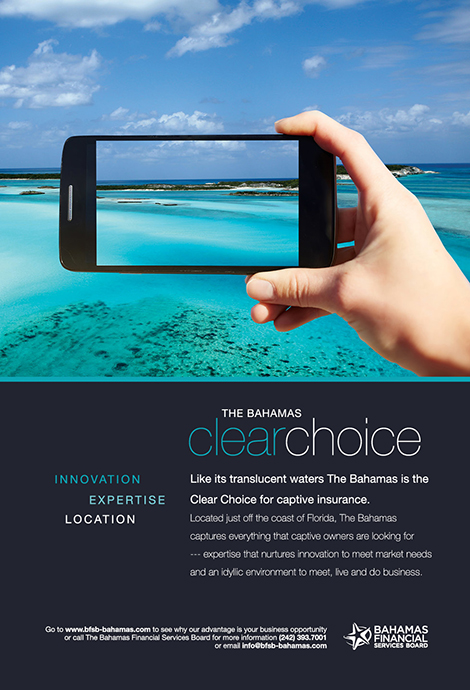Marsh
Marsh’s Ellen Charnley speaks to CIT about ReadyCell, the company’s AI-powered risk financing solution
What motivated Marsh to develop ReadyCell, and how does it address the challenges faced by organisations in the current commercial insurance market?
For quite some time we’ve used our captive technology to set us apart from other captive managers.
We aimed to continue pushing the envelope and find a way to flip the conversation — to allow for the possibility of setting up an insurer quickly and with flexibility needed for each client.
Many organisations are interested in owning their own insurance company, but the regulatory and approval processes can be lengthy and cost prohibitive.
The use of our technology, combined with the power of artificial intelligence (AI), enabled us to simplify the process, reduce costs significantly and remove barriers of entry.
In essence, ReadyCell allows organisations to take control of their risk finance and frees them from the uncertainties of the commercial insurance market.
Could you elaborate on the role of AI-powered know-your-client technology in ReadyCell and how it contributes to streamlining the formation of individual insurance companies?
Marsh’s proprietary insurance-company-as-a-service (ICaaS) platform utilises AI techniques, including advanced algorithms and a large language model (LLM), to streamline and enhance the risk profiling process for potential prospects.
By intelligently analysing select criteria and consolidating information using the LLM, our AI-powered system calculates a comprehensive risk profile. T
his automated assessment and decision-making process enables us to expedite onboarding and approval procedures, providing a more efficient and accurate evaluation to ensure compliance with regulatory requirements.
Can you provide insights into the regulatory landscape and how ReadyCell’s conditional pre-approved regulatory licensing from the District of Columbia Department of Insurance, Securities and Banking facilitates the insurance company formation process?
We worked closely with the D.C. regulatory body to create this process over the course of two years, allowing for streamlined and increased efficiencies. A ReadyCell is formed as a protected cell within Marsh’s Mangrove Insurance Solutions PCC.
There is no risk sharing between ReadyCells — they remain segregated and have no exposure to other cells within Mangrove Insurance Solutions PCC.
What are the key features that make ReadyCell a unique and attractive risk financing solution for organisations, particularly in terms of flexibility and simplicity?
ReadyCell is a flexible solution that can be immediately used to insure a single line of coverage or a layer in a larger insurance programme. The solution can also be kept on standby for up to 18 months, readily available to assume risk when needed.
We have developed this solution to provide organisations access to risk financing solutions that were previously only available to larger companies because of complexity, cost, and timing constraints.
Through the solution, we aim to demystify the captive industry and offer more strategic risk financing options to all client segments.
How does ReadyCell empower organisations to take greater control of their risk management, and what advantages does it offer in terms of responding to uncertainties in the commercial insurance market?
Organisations using ReadyCell have the flexibility to use it within a layer of their risk tower or have it on hand for difficult renewal processes where pricing constraints or limitations exist. Any new or emerging risks are also a good fit for ReadyCell; equally, if organisations are already experiencing challenges with a certain business line, ReadyCell could be implemented.
Could you walk us through the process by which organisations can use ReadyCell to form their own insurance company, and how it fits into Marsh’s Mangrove Protected Cell Facility in Washington D.C.?
Organisations can sign up within minutes and have a ReadyCell pre-approved by the D.C regulator.
Our technology platform uses various digital tools to quickly process the application and assimilate the information for the regulator.
The client has up to 18 months to decide how specifically to use their vehicle and included in their application fee is a simple one line feasibility study.
What specific types of coverage or layers within a larger insurance programme can organisations immediately begin to insure using ReadyCell?
One of the principles of ReadyCell is ‘simplicity’, meaning that in order to keep costs down and processing speeds high, the transactions need to be simple.
Therefore a ReadyCell will typically have one line of coverage with limited transactions and limited loss activity, for example property or excess liability.
How does the standby feature benefit organisations, and what scenarios might prompt them to activate their insurance company during this 18 month standby period?
ReadyCell is an excellent addition to a client’s overall risk finance portfolio, offering them a solution that can be set up and activated on demand.
It provides flexibility to cover for an anticipated change in coverage or costs, acting like a safety net on standby. For example, we had a client that wanted to cancel a property policy and restructure with a much larger retention in the primary layer.
However, cancellation provisions were days away from triggering the 100 per cent earned term in the policy.
Rather than cancel the policy early, the client established a ReadyCell to assume the increased retention on the new property policy that will begin when the existing policy expires.
The cost was insignificant enough that the client was willing to open the cell and wait to use it until they were ready.
How does ReadyCell contribute to Marsh’s broader strategy of driving innovation and leading the digital evolution within the captive insurance sector?
Each year we make significant investment into our captive technology platform. We’re committed to developing and deploying innovative, proprietary software and processes that allows for more effective, efficient and easy captive ownership.
As the world’s largest captive manager, we’re focused on a strategy that uses technology to constantly challenge and improve the industry and the services we provide for our clients.
Could you elaborate on how the simplified process, cost efficiency, and expert support make it especially attractive for small-to mid-sized businesses?
Historically, captives have been associated with larger organisations, but with ReadyCell we have driven down those barriers to entry.
We’ve simplified the process and increased the speed to an extent that smaller and medium-sized organisations can now have access to these risk financing vehicles and realise the many of the benefits that come from formalising their retained risk.
How does ReadyCell increase access to self-insurance options and cater to businesses that may be unaware of the captive concept or perceive it as suitable only for large organisations?
The idea of setting up an insurer within minutes that can cover one line of business or be put on standby for 18 months is a simple concept that can be understood universally, no matter what role you play in an organisation.
We don’t even have to use the word captive or cell to explain the concept because it’s just that straight forward.
Can you share any success stories or examples of organisations that have benefited from using ReadyCell in managing their risk and insurance costs on their own terms?
In addition to the property example, a contractor client recently needed to secure a US$8M limit Builders Risk insurance policy to show a lender to close the deal, but the policy was prohibitively expensive.
We had a call with the contractor on a Monday, and by that Friday a ReadyCell had been created and was underwriting the risk.
The deal closed on time, and the captive premium was set to commercial premium indications.





